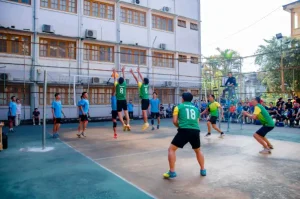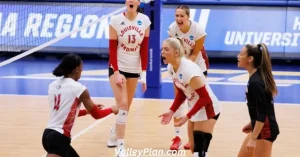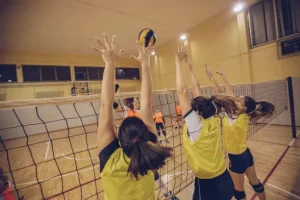Net violation are crucial volleyball infractions that can disrupt play. A player who touches the net gives the other team a point. This guideline ensures fair competition and prevents unfair advantages.
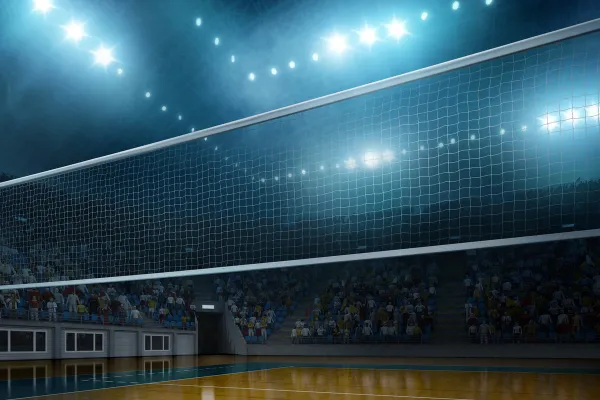
Understanding Net Violation
- Definition: During a rally, if a player touches the net, then it is a net violation.
- Consequences: If one team touches the net, then the opposing team gets a point.
- Types of Violations: It is a common infraction to touch the net with hair, cloth, or the body. Players must avoid reaching over the net into the opponent’s space.
Volleyball Net Rules
Understanding volleyball net rules is crucial for fair play. Here are key points regarding net violations:
| Sr No | Rule | Description |
|---|---|---|
| 1 | Penetration Under the Net | Players can enter the opponent’s opponent’s space under the net without interfering. The foot must not touch the opponent’s opponent’s side. |
| 2 | Simultaneous Net Touch | When both team players simultaneously touch the net, officials declare them dead, and the rally is replayed. |
| 3 | Net Height | For men’s volleyball, net height is set at 1.15m, and for women, it should be set at 1.05m. Players can block serves, but one “cheek” must be in contact with the floor. |
| 4 | Volleyball Court Division | The volleyball court has two 9m halves and a 2.43m net. Court halves are divided by the net. |
| 5 | Net Faults | Touching the net is not considered a fault unless the player interferes with play. Touching the top band or creating an advantage constitutes a net fault. |

Net Violations In Volleyball
Understanding net violations in volleyball is crucial for fair and legal play. Here are 20 instances of net violations that players should be aware of:
- Touching the Net While Jumping to Hit, Hit, or Landing – If a player touches the net during these actions, the referee can call a net fault.
- Touching the Net During Ball Contact – It is considered legal if a player touches the net at any point during ball contact.
- Touching the Net with Any Body Part While the Ball is in Play – Any such contact is considered a net violation and results in a foul.
- Player Interference with Net Contact – Net contact isn’t a fault unless the player interferes with play. Examples include touching the post, ropes, or any part that affects the game.
- Penetration Under the Net – Any penetration under the net is a violation and strictly prohibited.
- Contacting the Net During Play – If a player accidentally brushes against the net while making a jump shot, mid-hit, or when landing, it’s a net fault – no two ways about it. Even thinking about hitting the ball and accidentally touching the net can still result in a penalty. Yeah, they’re they’re that strict.
- Back Row Player Violations – When back rowers touch an opponent’s ball above the net, they constitute an infraction.
- Understanding and Avoiding Fouls – Players specifically commit net violations when they contact the net while playing the ball or reach over it to play a ball, emphasizing the importance of avoiding these fouls.
- Game-Related Rule Violations – In the context of rule violations during play, officials consider all balls to be in or under the net. Technical rule violations are crucial to avoid a fair and smooth game.
- Net Serve In-Play – The net serve remains in-play unless it continues over the net or the opponents touch it. If it fails to clear the net or lands outside the opposing team’s court without opponents’ touch, it is out of play.
- Legal and Illegal Net Plays – Net calls can be intricate during fast-paced games. It’s crucial to dispel misconceptions about plays that are legal and those deemed illegal to avoid penalties.
- Contacting the Net During Play – A fundamental definition of a net violation is when a player touches the net with any part of their body while the ball is in play, constituting a foul.
- Net Faults and Interference – A net fault occurs when a player interferes with their opponent by contacting the net between the antennas. Such contact can result in the opposing team being awarded a point.
Consequences Of Net Violations
Committing a net violation can have demoralizing consequences, as the opposing team may be awarded a point. Teams must remain vigilant to avoid these avoidable errors.
These violations create a level playing field and protect the game. Follow the rules to avoid penalties and ensure fair and enjoyable volleyball play.
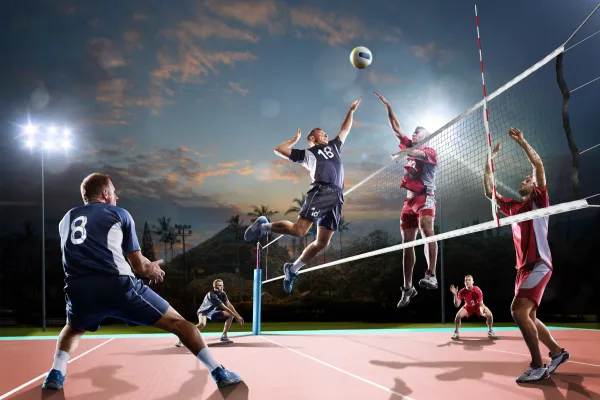
Impact on the Game
Net violations can sway the momentum of a match. Players must maintain spatial awareness and control to avoid these costly mistakes.
How to Avoid Net Violations
Avoiding net violations in volleyball is crucial for fair play and to prevent penalties. Here are key tips to help players minimize the risk of net violations:
| Sr No | Tip To Avoid Violation | Description |
|---|---|---|
| 1 | Body Awareness | Body awareness is key in the game. Make sure your hands and clothing don’t touch the net while playing. |
| 2 | Footwork | Keep an eye on your feet, especially when approaching the net. Your foot hitting the net can result in a violation. |
| 3 | Effective Communication | Teamwork is key. Talk it out with your teammates so you can avoid collisions and misunderstandings when the rallies get intense. Clear communication can prevent players from inadvertently touching the net. |
| 4 | Concentration | Stay focused and concentrated during the game, especially during intense moments like spikes. Concentration helps prevent unnecessary movements that may lead to net violations. |
| 5 | Serve Technique | Improve your serve technique to clear the net and land on the opponent’s court. A well-executed serve minimizes the risk of net violations. |
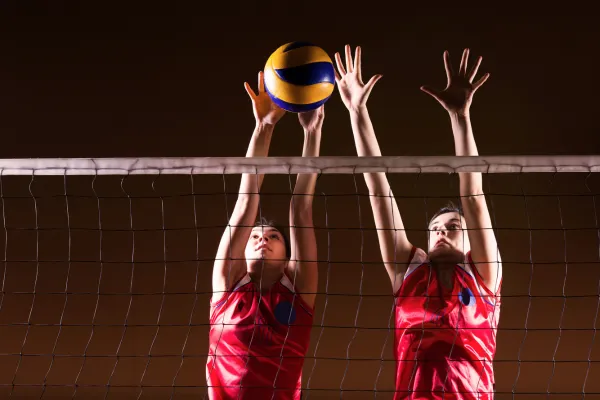
FAQs
Hitting the net in volleyball results in a violation. The opposing team gains a point, and the serve may change possession.
A net fault in volleyball does not occur when a player’s hair or uniform touches the net, as long as it doesn’t interfere with play. The fault is typically related to physical contact with the net during active play.
In volleyball, “over the net” refers to a violation when a player reaches over the net to interfere with the opponent’s play. It is against the rules and results in a point for the other team.
Yes, touching the net in volleyball results in a penalty. It can lead to a point awarded to the opposing team or a side-out, depending on the situation.
An illegal block in volleyball occurs when a player makes contact with the ball above the net, fully crossing the plane, or if two teammates consecutively hit the ball during a block.
Conclusion
To conclude, volleyball players must understand net infractions to play honestly and avoid penalties. A enjoyable and hard game requires following the rules, being aware of your surroundings, and communicating correctly.
Reduced net violations level the playing field, safeguard the sport’s identity, and encourage good sportsmanship. Avoid breaking the volleyball net by keeping it clean, following the regulations, and enjoying the game.
Team volleyball success depends on understanding and preventing net violations. For fair and competitive play, players must be alert, exercise solid technique, and be cautious of their actions.
Related Posts
How To Set Up A Volleyball Net
How Tall Is A Men’s Volleyball Net?
Measurements Of A Volleyball Court

Hassan Baig a former volleyball player, coach and Administrative At Volleyplan.com.
My name is Hassan Baig and I am a former volleyball player and coach. I have a passion for the sport and have dedicated my life to promoting it. I have worked with some of the best players in the game and have helped them achieve their full potential Read More


